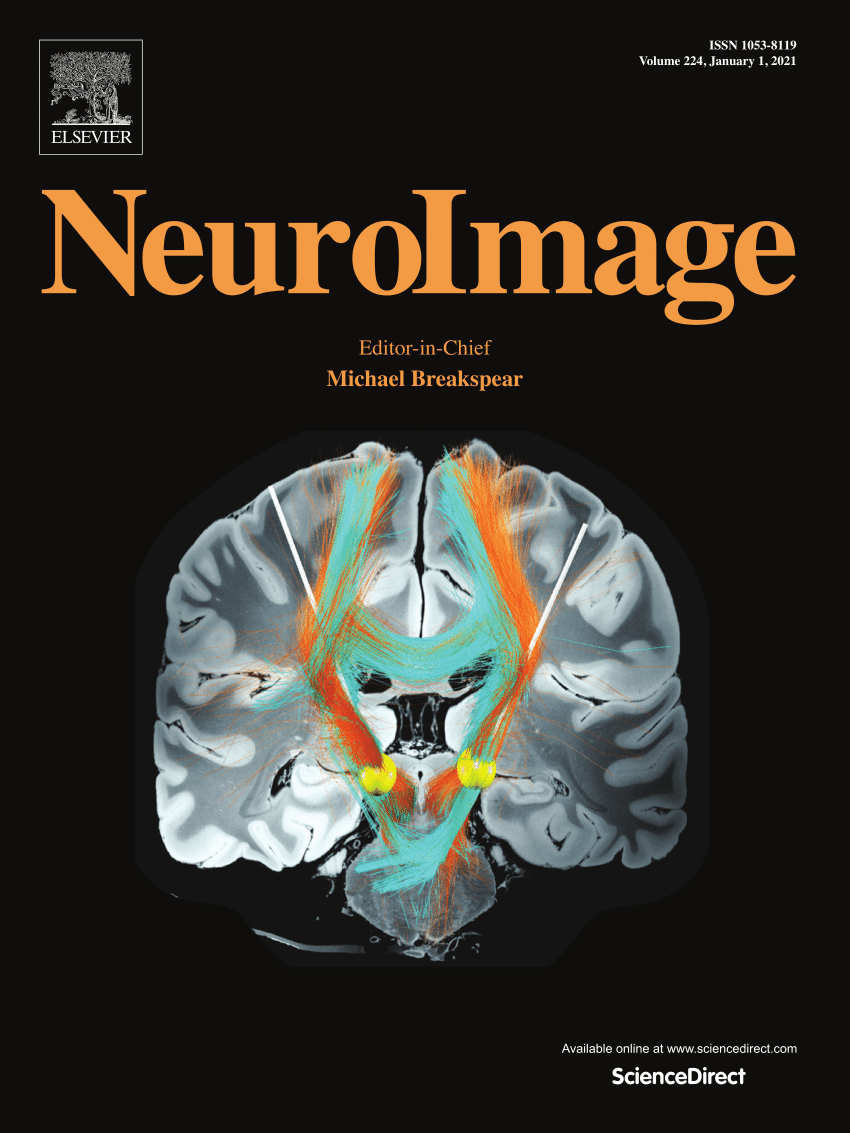Extended homogeneous field correction method based on oblique projection in OPM-MEG
IF 4.7
2区 医学
Q1 NEUROIMAGING
引用次数: 0
Abstract
Optically pumped magnetometer-based magnetoencephalography (OPM-MEG) is an novel non-invasive functional imaging technique that features more flexible sensor configurations and wearability; however, this also increases the requirement for environmental noise suppression. Subspace projection algorithms are widely used in MEG to suppress noise. However, in OPM-MEG systems with a limited number of channels, subspace projection methods that rely on spatial oversampling exhibit reduced performance. The homogeneous field correction (HFC) method resolves this problem by constructing a low-rank spatial model; however, it cannot address complex non-homogeneous noise. The spatiotemporal extended homogeneous field correction (teHFC) method uses multiple orthogonal projections to suppress disturbances. However, the signal and noise subspace are not completely orthogonal, limiting enhancement in the capabilities of the teHFC. Therefore, we propose an extended homogeneous field correction method based on oblique projection (opHFC), which overcomes the issue of non-orthogonality between the signal and noise subspace, enhancing the ability to suppress complex interferences. The opHFC constructs an oblique projection operator that divides the signals into internal and external components, eliminating complex interferences through temporal extension. We compared the opHFC with four benchmark methods by simulations and auditory and somatosensory evoked OPM-MEG experiments. The results demonstrate that opHFC provides superior noise suppression with minimal distortion, enhancing the signal quality at the sensor and source levels. Our method offers a novel approach to reducing interference in OPM-MEG systems, expanding their application scenarios, and providing high-quality signals for scientific research and clinical applications based on OPM-MEG.
基于 OPM-MEG 中斜投影的扩展均质场校正方法。
基于光泵磁力仪的脑磁图(OPM-MEG)是一种新型的非侵入性功能成像技术,具有更灵活的传感器配置和可穿戴性;然而,这也增加了对环境噪声抑制的要求。子空间投影算法在MEG中被广泛应用于噪声抑制。然而,在通道数量有限的OPM-MEG系统中,依赖于空间过采样的子空间投影方法表现出性能下降。均匀场校正(HFC)方法通过构建低秩空间模型解决了这一问题;然而,它不能处理复杂的非均匀噪声。时空扩展均匀场校正(teHFC)方法利用多个正交投影来抑制干扰。然而,信号和噪声子空间不是完全正交的,限制了teHFC性能的增强。因此,我们提出了一种基于斜投影的扩展均匀场校正方法(opHFC),该方法克服了信号与噪声子空间之间的非正交性问题,增强了抑制复杂干扰的能力。opHFC构建一个斜投影算子,将信号分为内部和外部分量,通过时间扩展消除复杂的干扰。我们通过模拟实验、听觉和体感诱发的OPM-MEG实验,将opHFC与四种基准方法进行比较。结果表明,opHFC以最小的失真提供了优越的噪声抑制,提高了传感器和源级的信号质量。该方法为减少OPM-MEG系统的干扰,扩展其应用场景,并为基于OPM-MEG的科学研究和临床应用提供高质量的信号提供了新的途径。
本文章由计算机程序翻译,如有差异,请以英文原文为准。
求助全文
约1分钟内获得全文
求助全文
来源期刊

NeuroImage
医学-核医学
CiteScore
11.30
自引率
10.50%
发文量
809
审稿时长
63 days
期刊介绍:
NeuroImage, a Journal of Brain Function provides a vehicle for communicating important advances in acquiring, analyzing, and modelling neuroimaging data and in applying these techniques to the study of structure-function and brain-behavior relationships. Though the emphasis is on the macroscopic level of human brain organization, meso-and microscopic neuroimaging across all species will be considered if informative for understanding the aforementioned relationships.
 求助内容:
求助内容: 应助结果提醒方式:
应助结果提醒方式:


